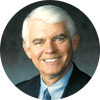If I told you research can't bring patients to your office, I could stop writing, you could stop reading and we could all go do something else. However, that just isn't true. Research can enhance your practice - but how? Research is one leg of a balanced three-legged stool.
If research is one leg of the stool, what are the other two? A strong choice for the second leg is education. How can research have meaning to you or your patients if you know nothing about what has been studied or if you cannot understand what is being reported? Getting the word out and making it easy to understand are as vital as the research itself.
The third leg is more difficult to define, but it represents the leg of action. If we know something and understand its value, reason would suggest that our behavior (or at least our thinking) should be affected. Political activists use research and educational outcomes to motivate others to act. So, when someone seeks your $10 contribution for your state association, $50 for your national association and $75 dollars to support a particular PAC without seeking support for educational and research efforts, they are creating an imbalance in the stool by extending one leg at the expense of the others.
These three legs haven't always been equal. For example, in the early history of chiropractic, patients were satisfied with the care received and the removal of their pain. No one understood why it happened and there were no laws governing the practice, but word got out that chiropractic works and patients started coming. The education/information leg was longer than the other two.
In time, protective legislation was enacted to prevent enemies of chiropractic from suppressing patient care. The leg of action started to grow as legislative enactments on state and federal levels were put into place.
Only in recent decades has the research leg started to equal the other two. From a cohort of less than five individuals in the 1970s to a research conference that attracted 400 participants (ACC-RAC 2009), the research enterprise of chiropractic has grown from nub to full-length leg (helped in part by the FCER Fellowship Program). Research provides the material about which we educate ourselves, students, patients, politicians and insurance companies, and thereby moves us to action (to seek care, provide coverage, pass laws, etc.). Without research, we babble, coerce, threaten and create fear. These techniques can work, but they are often expensive and have a short shelf life. With facts, action is more sustainable.
Or is it? In this era of evidence-based practice, or what some are now calling comparative-effectiveness research, we can no longer "move to action" without support of data. In fact, in the current economy it is difficult to get people to act when the data is obvious. Read the article from the March 9, 2009 Newsweek, "Why Doctors Hate Science." Author Sharon Begley takes a shot at how medicine is being practiced, in spite of evidence to the contrary:
Definitive studies over many years have shown that old-line diuretics are safer and equally effective for high blood pressure compared with newer drugs ... and that MRIs for back pain lead to unnecessary surgery. And those Pap tests? ... A 2004 study found that some 10 million women lacking a cervix [total hysterectomies] were still getting Pap tests.
Doctors have long resisted having science guide their practice. That's obvious from the disparity in clinical practices from one region of the U.S. to another, as the Dartmouth Atlas of Health Care has been finding since the early 1990s. Rates of coronary-bypass surgery among Medicare patients in McAllen, Texas, are five times those in Pueblo, Colo. Rates of back surgery in Casper, Wyo., are six times those in Honolulu and the Bronx.
The power of medical culture explains only part of the resistance to following practices that have been shown scientifically to be superior to others. Money also matters.
So, if the doctors are slow to respond to the overwhelming evidence, why would patients? Some will not respond, but instead go to the Internet and find sites that offer advice on health care. Patients want the facts, and now they can get them online. Some of what is available may not be reliable (the education leg), though much of what is available purports to be based on research (another leg) with the intent to move to action (the third leg).
Imagine a "definitive study" that gave convincing evidence that chiropractic care could cure the common cold. Everyone would come running to our offices each time they sneezed. But only if they knew about the study and understood that the evidence was convincing, and that their insurance companies were mandated to pay for chiropractors treating patients with colds. The stool must be balanced. Without "convincing evidence," there would be little to say that would "move to action."
Now back to my original premise. Research can enhance a chiropractic practice, but not by itself. Without the total social context of knowledge, information/education and motivation, action will not likely occur. Let's balance the stool. Let's prop up the research enterprise (FCER) along with the educational component (FCP) and your respective PACs and associations. Let's make every dollar count by keeping the stool balanced.
Click here for previous articles by Reed Phillips, DC, PhD.





